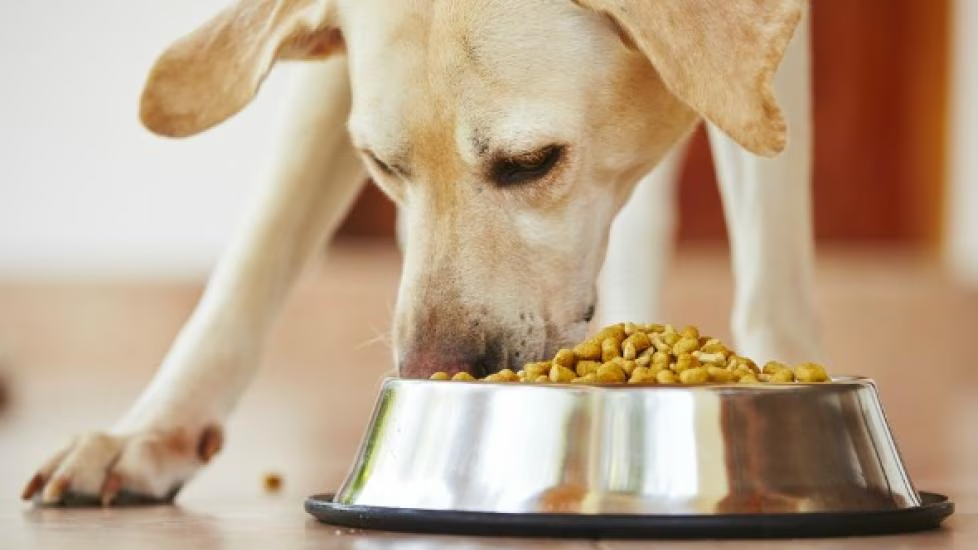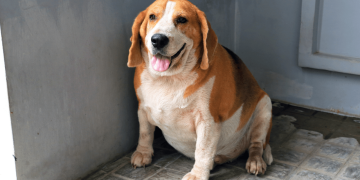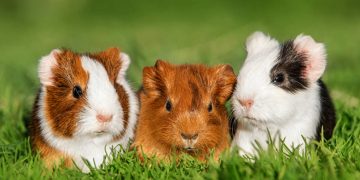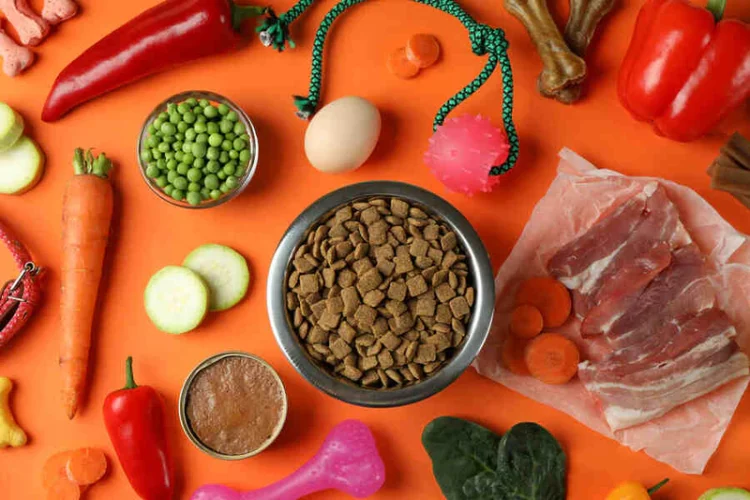Choosing the right food for your pet is one of the most important decisions you will make as a pet owner. Proper nutrition is the foundation for a healthy, happy life for your furry companion, influencing everything from their energy levels and coat condition to their longevity and overall health. However, with the myriad of pet food options available today, it can be difficult to determine which one is best for your pet. Understanding your pet’s nutritional needs, factoring in their age, breed, and health status, is essential in making the right choice.
This article will explore the key factors that influence your pet’s dietary needs and provide guidance on how to select the most suitable food to keep your pet in peak condition. Whether you have a playful puppy, a senior cat, or a pet with special dietary needs, understanding these factors can help ensure they receive the optimal nutrition they require.
1. Age: Tailoring Nutrition to Your Pet’s Life Stage
One of the first factors that should influence your pet’s diet is their age. Pets have different nutritional requirements at different stages of their lives, and providing age-appropriate food helps ensure they grow, develop, and maintain optimal health.
Puppies and Kittens: Rapid Growth and Development
During the early stages of life, puppies and kittens experience rapid growth, and their bodies require a higher amount of calories, protein, and fat to support their development. Nutrient-dense, high-quality food that supports muscle development, bone growth, and brain function is essential during this period. Pet food formulated for puppies or kittens often contains higher levels of protein, fat, and essential vitamins to meet these demands.
Some key nutrients that are crucial for young pets include DHA (docosahexaenoic acid) for brain and eye development, calcium and phosphorus for strong bone formation, and antioxidants to support their immune system.
Adult Pets: Maintaining Health and Energy
As pets reach adulthood, their growth slows down, and their nutritional needs change. Adult pets require a balanced diet that supports their overall health, energy levels, and maintenance of lean muscle mass. Unlike puppies and kittens, adult pets no longer need food with excessive calories or fat, as this can lead to obesity.
Adult pet food should focus on providing a well-balanced ratio of protein, healthy fats, fiber, vitamins, and minerals to sustain energy levels, support digestion, and maintain a healthy weight. For active dogs or cats, higher protein levels may be necessary to support their lifestyle, while less active pets may benefit from a lower-calorie food to prevent excess weight gain.
Senior Pets: Special Care for Aging Companions
As pets age, their metabolism slows down, and their activity levels often decrease. Senior pets may also begin to experience certain health issues such as joint problems, digestive issues, or decreased kidney function. To accommodate these changes, senior pet food is formulated to provide the right balance of nutrients without overloading the pet’s system.
Senior pet food often contains fewer calories to prevent weight gain, higher levels of fiber to support digestion, and ingredients like glucosamine and chondroitin to promote joint health. Additionally, food designed for senior pets typically includes easily digestible proteins and added antioxidants to support their immune systems and cognitive function.
2. Breed: Understanding Specific Nutritional Needs
Just as pets’ nutritional needs change with age, they can also vary significantly by breed. Different breeds of dogs and cats have specific size, activity levels, and genetic predispositions that influence their dietary needs. Choosing a food that caters to these breed-specific needs ensures your pet stays healthy and thrives.
Small Breeds vs. Large Breeds
Small breed dogs, such as Chihuahuas, Dachshunds, and Pomeranians, have faster metabolisms than larger dogs, so they may require higher calorie content in their food to meet their energy demands. On the other hand, large breed dogs, such as Great Danes and Saint Bernards, need a different nutrient profile. Large breed puppies, for example, need a special formula that promotes slow, controlled growth to prevent joint issues like hip dysplasia. Large breed adult foods often contain joint supplements like glucosamine to support their weight-bearing joints.
Small breeds also tend to have smaller mouths and teeth, so pet food for small breeds is often designed with smaller kibble size for easy eating.
Cats: Differences Between Indoor and Outdoor Cats
Cats are obligate carnivores, meaning their bodies require animal-based proteins to thrive. However, the type of food your cat needs can depend on whether they are indoor or outdoor cats. Indoor cats, due to their more sedentary lifestyle, typically require a lower-calorie diet to prevent weight gain. These diets are often enriched with fiber to support digestive health and prevent hairballs, which indoor cats are more likely to develop due to grooming habits.
Outdoor cats, on the other hand, require higher protein content to support their more active lifestyle and hunting instincts. They may also benefit from food that provides extra nutrients to support their immune systems and overall health as they are more exposed to environmental factors.

3. Health Considerations: Special Diets for Specific Conditions
Health conditions can significantly affect your pet’s dietary needs. From allergies to chronic illnesses, tailoring your pet’s diet to their health condition is a critical step in maintaining their quality of life.
Allergies and Sensitivities
Many pets suffer from food allergies or sensitivities, with common culprits being certain proteins (like chicken or beef) or grains (like wheat or corn). Pets with food allergies may exhibit symptoms such as itching, gastrointestinal issues, or ear infections. If your pet has food allergies or sensitivities, you should consult your veterinarian about hypoallergenic foods, which typically use novel protein sources like duck or venison and are free from common allergens.
Additionally, grain-free diets have become popular for pets with sensitivities to grains, although it is important to note that some pets may require grains for proper digestion.
Weight Management
If your pet is overweight, it is essential to adjust their diet to promote healthy weight loss. Many pet food brands offer weight management formulas that are lower in calories but still provide the necessary nutrients. These foods typically contain higher fiber levels to help your pet feel fuller for longer and promote healthy digestion.
Alternatively, pets that are underweight may benefit from high-calorie foods with added protein and fats to help them gain weight in a controlled manner.
Joint Health
Joint health is a major concern for many pets, particularly large breeds and older pets. To promote joint health, pet food with added glucosamine and chondroitin can help maintain healthy cartilage and reduce inflammation. Some foods also contain omega-3 fatty acids, which have anti-inflammatory properties and can support overall joint function.
Digestive Issues
Pets with sensitive stomachs or digestive issues may require special diets that are easier to digest and gentle on their gastrointestinal system. These foods often contain easily digestible proteins, a balance of soluble and insoluble fiber, and prebiotics to support gut health. Special formulations for pets with digestive sensitivities are often designed to reduce inflammation in the digestive tract and improve nutrient absorption.
4. The Importance of Quality Ingredients
The quality of the ingredients in your pet’s food plays a significant role in their overall health and nutrition. Choosing food that is made with high-quality, natural ingredients ensures that your pet is receiving the nutrients they need without unnecessary fillers or artificial additives.
Protein Sources
Protein is a critical component of a pet’s diet, especially for muscle development, energy, and overall growth. The best pet foods use high-quality animal-based protein sources such as chicken, lamb, beef, turkey, or fish. It’s important to ensure that the protein source is named and identifiable, rather than vague terms like “meat meal” or “by-products,” which may not be as nutritionally beneficial.
Grains vs. Grain-Free Diets
Grains such as rice, oats, and barley are often used as sources of carbohydrates in pet food. While grains are generally considered safe for most pets, some pets may develop sensitivities to them. Grain-free diets are often recommended for pets with allergies or sensitivities, but it is important to ensure that the food still provides the right balance of carbohydrates, proteins, and fats. Be cautious of grain-free diets that substitute grains with high levels of potatoes or peas, as these ingredients can be overly starchy and lead to weight gain if not carefully balanced.
Additives and Preservatives
Look for pet food that is free from artificial preservatives, colors, and flavors. Natural preservatives like tocopherols (vitamin E) and ascorbic acid (vitamin C) are much safer for your pet. Additionally, ensure that the food contains no unnecessary fillers, such as corn or soy, which do not contribute much to your pet’s overall nutritional needs.
5. Consulting Your Veterinarian
While choosing the right food for your pet can be overwhelming, consulting with your veterinarian is always a good idea. Your vet can provide personalized recommendations based on your pet’s age, breed, size, activity level, and any health issues they may have. Regular vet check-ups will also help ensure that your pet’s nutritional needs are being met and that they remain in good health as they age.
Conclusion
Selecting the right food for your pet is not a one-size-fits-all decision. It requires careful consideration of their age, breed, health status, and specific dietary needs. By understanding these factors, you can make an informed choice that supports your pet’s health and well-being, ensuring they live a long and happy life by your side.























































